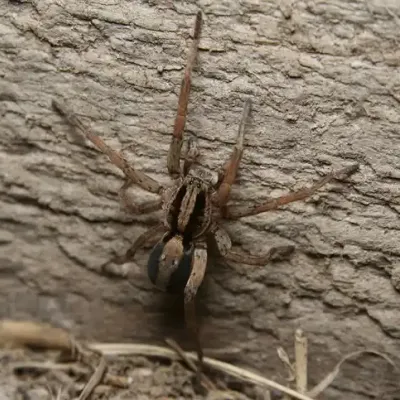About Wolf Spiders

Appearance: Relatively large black, gray, or brown body with markings on their back; long, spiny legs; 3/8 – 1 3/8 (female) and 1/4 – 3/4 (male) inches in length
Region: Found throughout the U.S.
Diet: Wolf spiders are carnivorous and inject their prey with venom to suck out their fluids, this includes insects like grasshoppers, earwigs, flies, ants, insect eggs, and even other spiders. They are most active in hunting at night.
Habitat: Wolf spiders are adaptable and seek out habitats ranging from woodlands to coastal forests, but tend to dwell in gardens. Unlike other species, wolf spiders do not spin webs—they burrow in the ground. At the beginning of fall, they enter homes seeking warmth. Often found in houseplants, doors, basements, and windows.
Threats: While wolf spiders can bite, it is usually only if threatened or provoked and there are no risks to health although a bite could be painful. They are more likely to intimidate and scare people due to their size and speed.
Control: Due to their speed, wolf spiders can scurry into homes when people are entering or moving below doors with ease. To reduce the likelihood of an infestation, seal cracks around your home that allows entry for spiders. Keep your lawn maintained and pick up debris from around your property, routinely sweep or vacuum your living spaces and closets, and eliminate clutter so there are no places to nest or hide.
